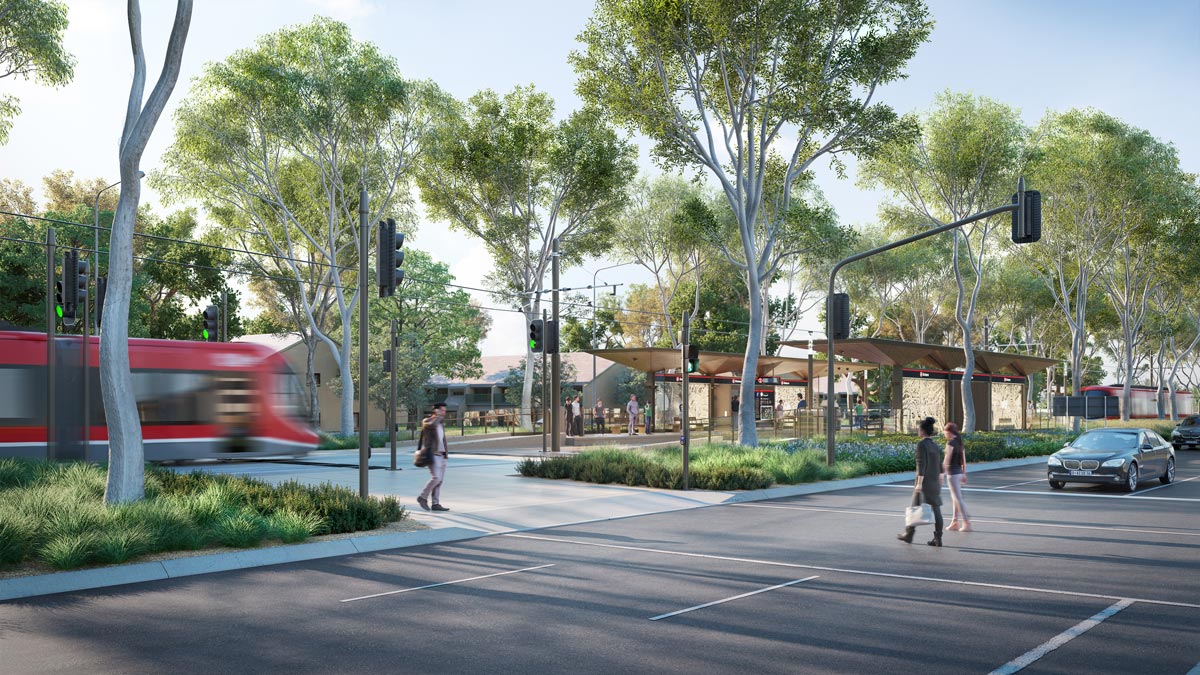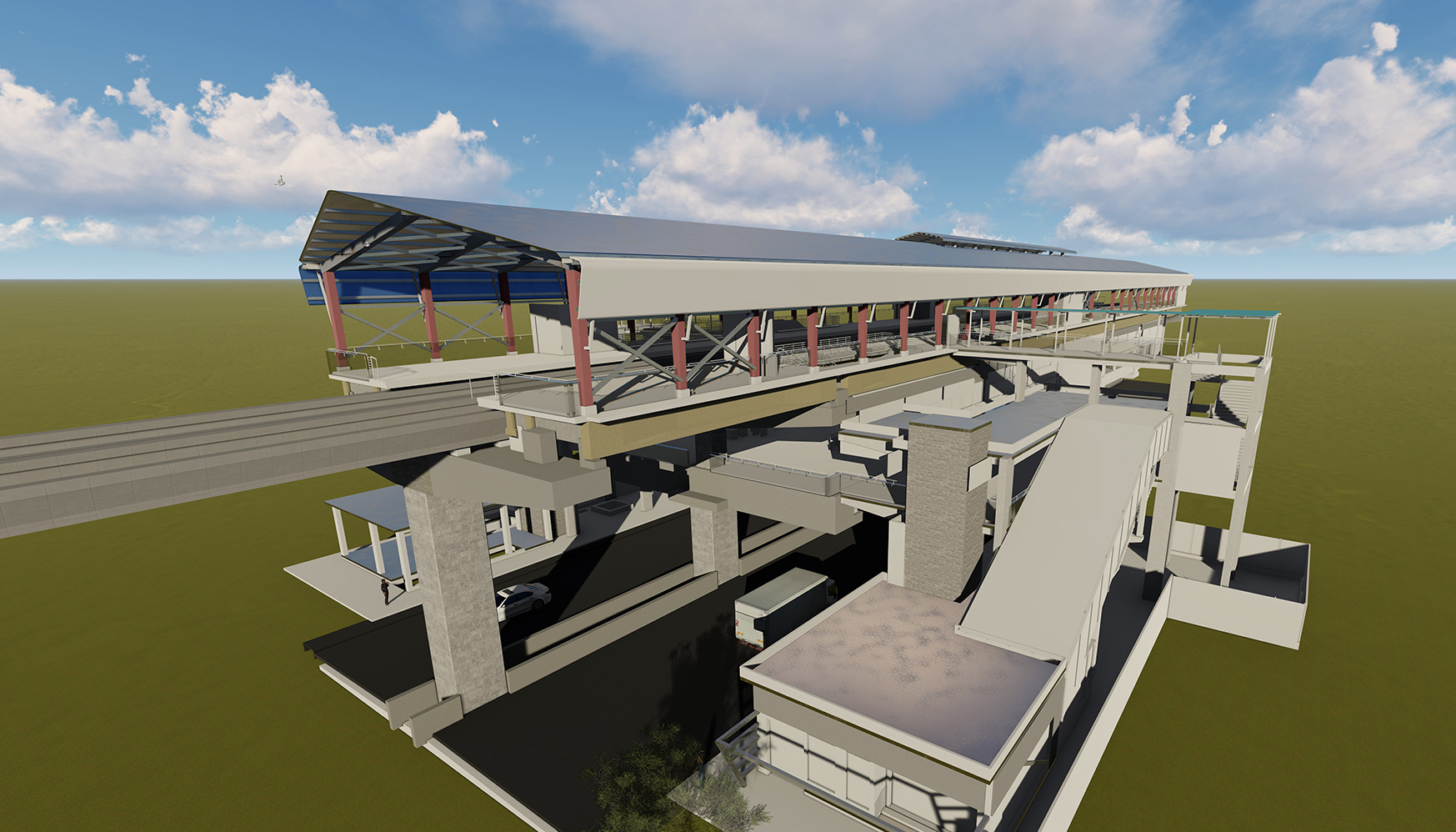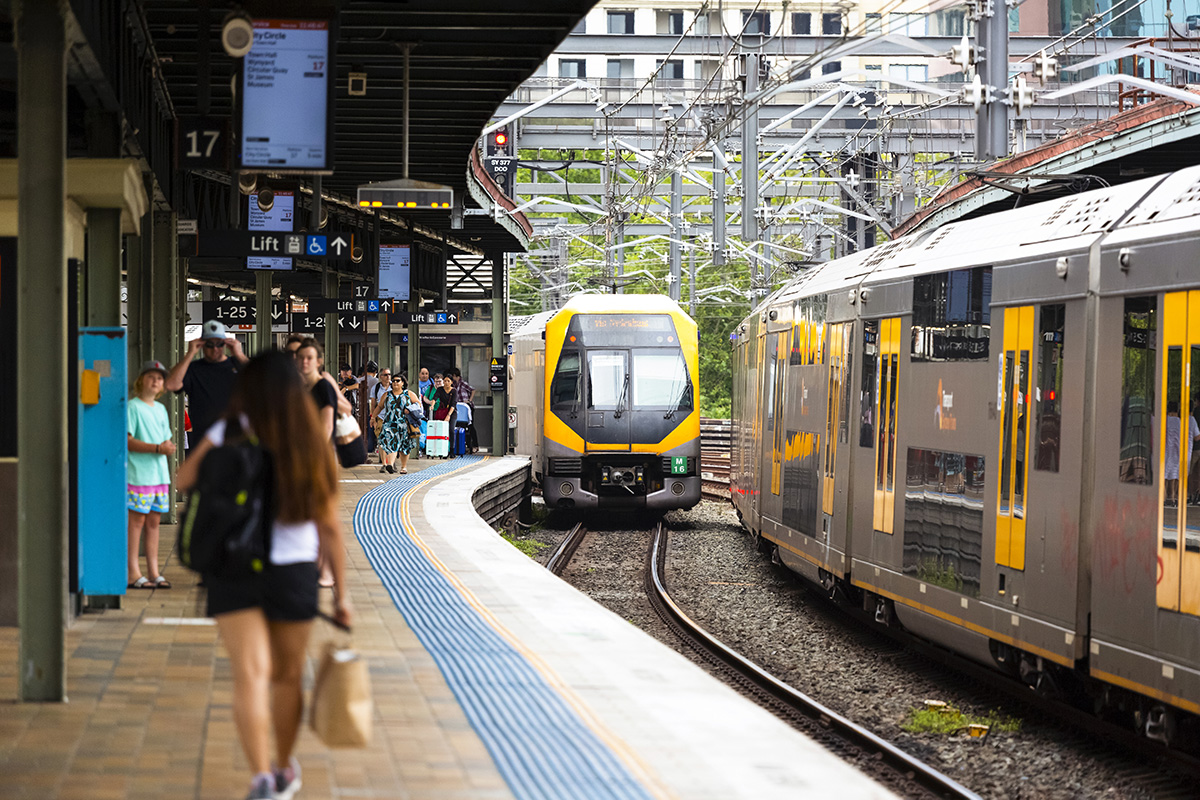
Canberra has one of the highest car usage rates in Australia, and one of the lowest for use of public transport. The new light rail acts as the central spine connecting the city to the fast-growing northern suburbs of Canberra. It is part of an integrated transport network, with buses working alongside light rail to get Canberrans and visitors where they want to go.
SMEC delivered the design for pavements, road and drainage, as well as geotechnical studies and earthworks on the Flemington Road section of the alignment. A unique project of this scale, however, was not without its challenges.




Flexibility and technical expertise key to a city-first
As this was Canberra’s first light rail system, there were no standard details or local precedents in place for design. Through close discussions with our client, we established standard details for signage, maintenance bays, for warning signs for cyclists that cross the light rail, for how to treat and line mark intersections between the road and light rail, how to manage pedestrians at intersections and stops, what the stops need to achieve, what controls need to be in place for pedestrians.
Engineers like to work within known parameters, however on this project many teams were facing several unknowns during the design phase, which required flexibility, foresight and innovation. SMEC were at the forefront of these challenges, inspecting and adjusting all the works to ensure they fit with the changing landscape as construction progressed.
Flemington Road flooding
Flooding of Flemington Road near Randwick Road was a known problem that we needed to resolve to maintain the light rail system’s operability in storm events with an Annual Exceedance Probability (AEP) greater than 10. Prior to this, Flemington Road had to be closed to road traffic during significant storm events. Water would flood from the adjacent drainage corridor through a natural low point between two knolls into the road network and fill up like a swimming pool. SMEC designed a levee adjacent to the road to protect and provide flood immunity to both road and rail corridors and keep the flood waters in the adjacent block. This solution reused surplus materials from the light rail construction site and as a result reduced waste generation to landfill.
Urban renewal
It’s not only a new transport system that has Canberra excited. It’s also the opportunities for urban renewal that a project like Canberra Light Rail opens up.
The light rail will increase the “economic energy” of Canberra, encouraging new housing and businesses, including hotels and restaurants, along the route. This is crucial for a city that traditionally has a heavy economic reliance on military and government sectors. Canberra’s liveability is also boosted by a more accessible and inclusive transport system that links residential development with areas of employment, retail and entertainment.
Built to last
In addition to the environmental benefits of users switching from private car to public transport use, the project also prioritised sustainable design and delivery.
During construction, we were involved in a Climate Change Risk Assessment to identify potential impacts on the environment while also identifying appropriate risk mitigation to avoid serious impacts on the project. We also ensured that waste in construction was minimised through using precast, modular components and pre-fabrication materials. These are just a few examples of the many measures that led to the project being awarded the Infrastructure Sustainability Council of Australia’s (ISCA) ‘Excellent’ Infrastructure Sustainability Design Rating.
An exciting track ahead
While there was complexity throughout the planning and build, SMEC collaborated with its partners to deliver the project successfully for the people of Canberra.
With our delivery partners, the team also designed the depot with provision for future light rail expansion. It integrates seamlessly with existing infrastructure, including bus interchanges in Gungahlin and Dickson, as well as the urban developments that exist either side of the rail alignment.
While Canberra’s light rail has only just commenced operation, it’s already changed the landscape of public transport and urban renewal in the city.
Related
insights
 Construction commences on key section of Chennai Metro Rail’s Phase 2
Construction commences on key section of Chennai Metro Rail’s Phase 2
Our design comprises an integrated rail and road bridge with double decker stations, which will carry both highway and mass rapid transport commuters on the same pier.
 ‘Elegant, innovative and sustainable’ – ENR Global Best Rail Project
‘Elegant, innovative and sustainable’ – ENR Global Best Rail Project
SMEC took the role of Design Lead on the project which involved building a four-kilometre elevated skytrain and a 270-metre curved, cable-stayed rail bridge over Windsor Road at Rouse Hill.
 Dohazari to Cox's Bazar Railway project, Bangladesh reaps benefits of site safety culture
Dohazari to Cox's Bazar Railway project, Bangladesh reaps benefits of site safety culture
Health and safety should be an integral part of businesses, of all shapes, and sizes. At SMEC it is imperative that we protect the well-being of people associated with our company, whether on-site or in the office.





